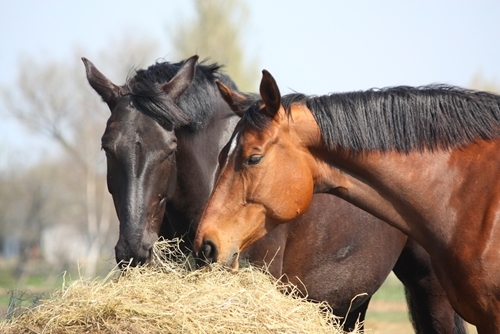It’s undoubtedly the hope of trainers and breeders everywhere that newborn foals are born happy and healthy. However, that’s not always the case, and certain foals suffer from maladjustment syndrome, which results in severe cognitive disruptions. Even though these instances can prove draining, there’s at least some glimmer of hope: As originally reported by CBS Chicago, researchers at University of California, Davis are finding that horses with this syndrome are providing clues to autism in human children.
The so-called ‘dummy foals’
Those horses coping with maladjustment syndrome are often called “dummy foals.” Speaking to CBS, equine veterinarian Chris Downs said they’re almost completely non-interactive, instead opting to lie about rather than feeding or exploring the world. According to DVM360.com, this ailment can effect 3 to 5 percent of all live births. Complicating the issue is that there are only a handful of screening tests available before the foal is actually born. One indicator is early udder development or any vaginal discharge from the mare during pregnancy. Other measures include somewhat costly radiographs and a diagnostic ultrasound (called ultrasonography.)
To understand why these foals acted in such a way, UC Davis researcher John Madigan, an expert in equine neonatal health, took blood samples from various foals. He found that many of these animals had high levels of neurosteroids, a hormone responsible for keeping them asleep within the womb. In horses and other animals, it’s the pressure of birth that tells us to wake up, and not experiencing that pressure can make foals unresponsive. So, researchers created a harness to keep the foals asleep and then wake them up abruptly, effectively restarting them. The result, they found, were far more active and alert foals.
To further test the researchers’ conclusions, several foals were also given shots of allopregnanolone, a hormone similar to the neurosteroids, according to UC Davis Today. These normally healthy foals would exhibit symptoms of maladjustment syndrome, but would return to normal behaviors after levels dropped.
Treating maladjustment syndrome
The work of Madigan and his colleagues is shedding new light on just how maladjustment syndrome is treated. The standard regimen is both time-consuming and regularly involves expensive medications. According to TheHorse.com, most vets suggest a round of supportive options, including injections of vitamin C, various antibiotics and an anti-inflammatory agent like DMSO. Because these foals often refuse to nurse, they must also be fed by hand several times per day. Not only do they miss out on nutrients, but affected foals don’t bond properly, and can go without learning basic behavioral patterns and survival techniques. With treatment, as many as 80% of afflicted foals recover, according to Equestrian Quarterly. Researchers believe the treatment time window is narrow. Those foals who do not recover can suffer from organ failure or even a diminished lifespan.
The link to autism
For researchers, it’s the neurosteroids that connects horse treatment back to autism in children. According to a 2011 study in Autism Research and Treatment, these same steroids have been linked to the development of autism spectrum disorder. There’s physical proof, as well: A 2013 Polish study found that children with autism had exceptionally high levels of neurosteroids in their saliva. It’s believed by researchers that these neurosteroids can remain in the child’s body and make their way through the blood-brain barrier. If they do, it’s then that children can experience a wide variety of cognitive alterations, including autism and similar developmental conditions.
A unified look at health
For Madigan, all of this research is helping to achieve a more thorough understanding of the basic connections between humans and horses. Though there are obvious differences between the species, he stressed that there’s profound similarities, especially in the way in which life begins.
“The concept that some disorders in animals and humans may be related to a failure of transition of consciousness at birth is a novel idea,” Madigan told UC Davis Today. “Evolutionary biological mechanisms for survival and adaptation after birth are important concepts, whether it’s a newborn foal or a newborn infant. In this case, it may very well be that the horse is allowing us to learn something about ourselves.”








